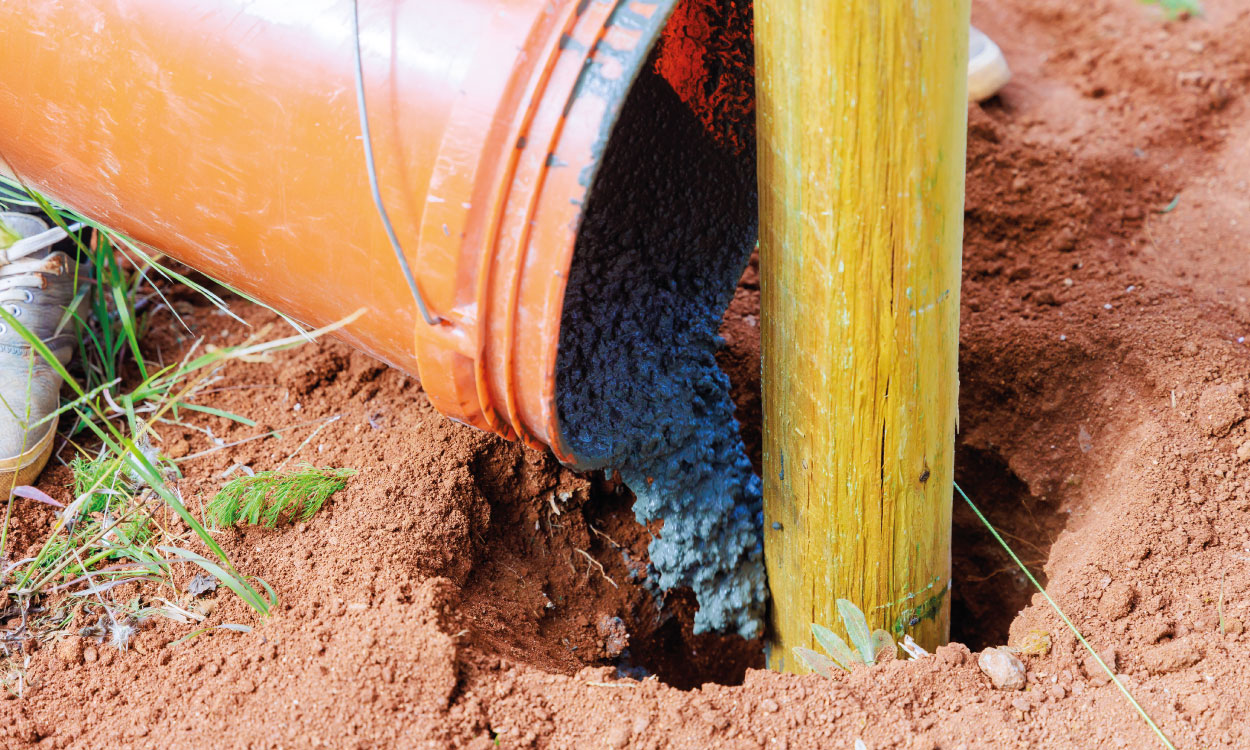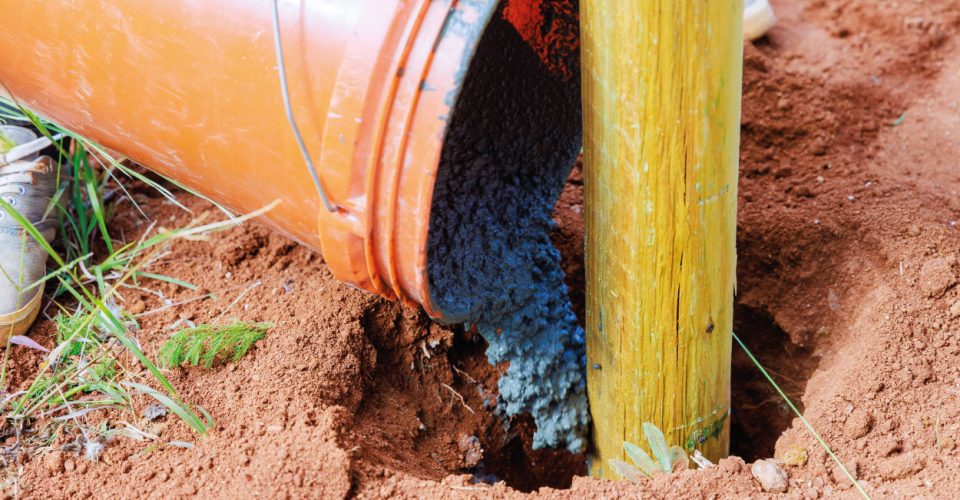Getting the Most from Your Bag of Postmix
Whether you’re a DIY enthusiast tackling your first fence installation or a seasoned professional looking to optimise your workflow, understanding how to maximise the effectiveness of postmix can make the difference between a sturdy, long-lasting fence and costly repairs down the line.
This versatile, fast-setting concrete solution has revolutionised fence post installation, but proper technique ensures you get maximum value from every bag whilst achieving professional-grade results.

Understanding Postmix Fundamentals
Postmix, also known as postcrete or ready-mix concrete, represents a significant advancement in fence installation technology. This pre-blended concrete mixture consists of high-quality cement and ballast, specifically formulated to provide superior strength and rapid setting times. Unlike traditional concrete mixing methods, postmix eliminates the guesswork and time-consuming preparation typically associated with fence post installation.
The key advantage of postmix lies in its remarkable setting speed, with initial hardening occurring within 5-10 minutes after water activation. However, achieving optimal results requires understanding proper application techniques and avoiding common installation pitfalls that can compromise structural integrity.
Calculating Postmix Requirements Accurately
When it comes to securing standard fence posts, knowing how much postmix to use is key to a stable, long-lasting installation.
Standard Fence Posts
For typical residential fence installations, plan to use approximately 1.5-2 bags of postmix per standard fence post. This quantity ensures adequate coverage and structural support for most residential fencing applications, providing the foundation strength necessary for long-term stability.
Gate Posts and Heavy-Duty Applications
Gate posts require significantly more postmix due to the additional stresses they must withstand from continuous movement and weight. Professional installers recommend using between 2-4 bags per gate post, depending on gate size and expected usage patterns. This increased quantity accommodates the deeper holes and wider circumference needed for gate post stability.
Calculating Total Project Needs
Before beginning your project, measure your fence line carefully and calculate total postmix requirements. This prevents mid-project delays and ensures consistent installation quality throughout your fence line. Factor in 10-15% additional material to account for variations in hole size and unexpected requirements.
Professional Installation Techniques
A solid fence starts with well-prepared post holes – the right depth and width make all the difference in long-term strength and stability.
Proper Hole Preparation
The foundation of successful postmix installation begins with correctly sized holes. Dig holes to approximately one-third of the post’s total height, with width measuring three times the post diameter.
This proportion ensures adequate concrete coverage whilst maintaining structural stability against wind loads and ground movement.
Water Management Strategy
Add water to fill approximately one-third of the hole depth before introducing postmix. This technique prevents dry pockets and ensures even moisture distribution throughout the concrete mass. Pour postmix steadily around the post until no standing water remains visible, indicating proper saturation levels.
Mixing and Positioning
Never attempt to mix postmix in buckets or containers, as the rapid setting time makes this approach ineffective. Instead, mix directly in the post hole using a stick or trowel to eliminate air bubbles and achieve uniform consistency. Use a spirit level immediately to ensure perfect post alignment before the mixture begins setting.
Avoiding Common Installation Mistakes
Even with quality materials, simple errors during installation can compromise the strength and longevity of your fence – here’s how to avoid the most common pitfalls.
Over-Watering Issues
Adding excessive water dramatically extends setting times and weakens the final concrete strength. If dry powder appears after initial mixing, add only small amounts of water until achieving proper consistency. Remember that postmix is formulated for specific water ratios, and deviating significantly compromises performance.
Timing Considerations
The rapid setting nature of postmix requires efficient work methods. Prepare all materials and tools before beginning, as you’ll have only 1-2 minutes before the mixture begins stiffening. Plan to complete positioning and alignment within this critical window to avoid repositioning difficulties.
Environmental Factors
Weather conditions significantly impact postmix performance. Optimal results occur during dry, mild conditions, whilst extreme temperatures or wet weather can affect setting times and final strength. Plan installations during favourable weather windows for best results.
Maximising Value and Performance
To get the most out of your postmix investment, it’s essential to follow best practices for storage, mixing, and site preparation.
Storage and Handling
Proper storage extends postmix shelf life and maintains consistent quality. Store bags in dry locations away from direct sunlight, moisture, and temperature extremes. The seal opened packages immediately to prevent moisture absorption that could cause premature hardening.
Quality Control Measures
Monitor each installation for consistent results. Properly mixed postmix should achieve uniform colour without dry spots or excess water pooling. Any deviations indicate technique adjustments needed for subsequent installations.
Drainage Considerations
Professional installers often add gravel layers at hole bottoms before post placement, improving drainage in poor soil conditions. This technique prevents water accumulation that could compromise long-term post stability, particularly in clay or moisture-prone soils.
Postmix represents an excellent investment for fence installation projects when used correctly. Following these professional techniques ensures maximum value from every bag whilst achieving results that stand the test of time.

